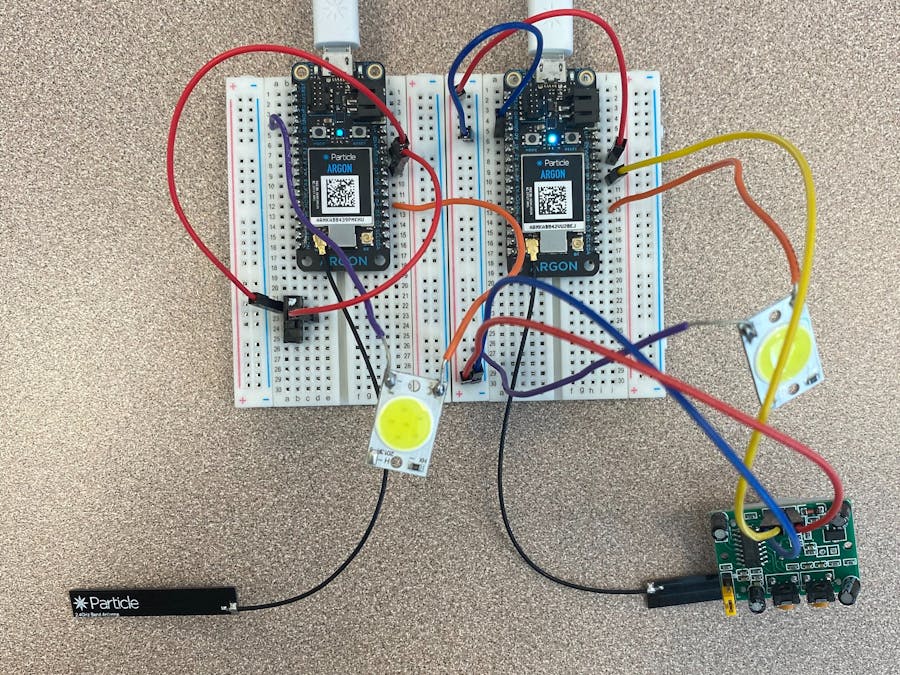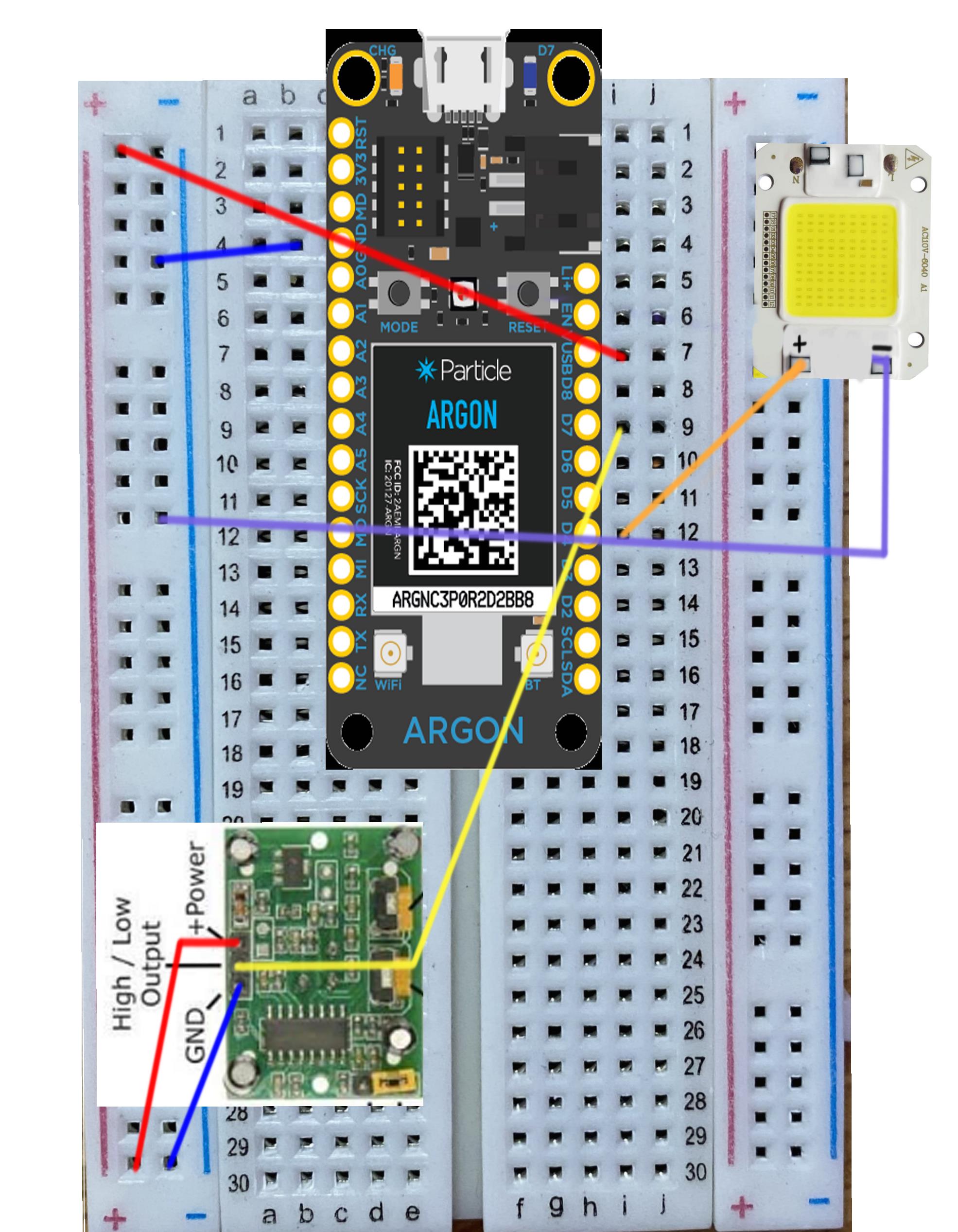The idea for this project came about when Ruben and I met up to write our code. Our original design was a light that would be activated as a motion sensor for applications in commercial and residential environments. Since our project requires bidirectional communication between our two Argon devices, we decided this would be too simple. As we did more research on the applications of motion sensors and lights with two-way communication, we came up with the idea for a project that would let you wave your hand over a motion sensor to activate a light on another device, and then use a switch to activate the light on the opposite argon, allowing for communication to let others know that you are okay or to send a message. This could be applied to bracelets or something similar, where you can communicate by waving your hand and making the other person's bracelet light up.
Below is a simple demonstration of how our project works, and explained after the video will be our process and troubleshooting on how we coded and wired everything.
When we started working on the code for the project we ran into a lot of small issues when trying to flash the code to our devices, but once we claimed both devices on the same account the code flashed to each argon without a problem. Once we had the circuit wired all that was left was to check our code and test it multiple times to see if our project would correctly record data and keep both lights on for the correct amount of time. Our Goal for this project was to create something that could be useful, but also not complicated so that anyone viewing this page could replicate it and use it for themselves. After spending time working on the project, I feel that our goal was accomplished and that we created something that was accessible and useable for anyone with access to a particle Argon device.
You can see a graph of our motion detection and switch being flipped here for motion and here for the switch.
Both of the above graphs can be accessed from the links included above, and they both show if the switch and motion sensor were used, by outputting a value of 1 or 0. A value of 1 means that the motion sensor detected motion or that the switch was in an open position. These graphs show each time a sensor is activated and can help us keep track of our events.



_zhWsCcSEcl.jpg?auto=compress%2Cformat&w=48&h=48&fit=fill&bg=ffffff)













Comments